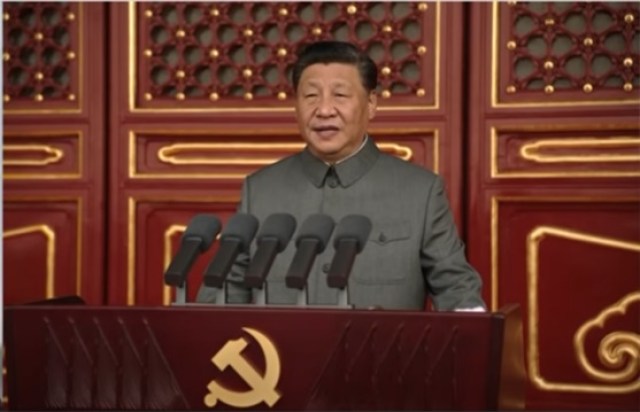By the end of the century, there will be more Chinese people outside the working-age population than in it.
This from frontpagemag.com.

China used to boast that this would be its century, but will there even be a China at the end of this century?
The numbers are not promising:
China’s population fell for the second year in a row in 2023, as deaths outpaced births in what was once the world’s most populous country.
Chinese authorities see the declining population as an existential threat to its economic future.
In 2022, China saw its first population decline since the 1960s, though it still had a population of 1.41175 billion people.
China’s population declined for a second consecutive year in 2023, dropping by about 2.08 million to 1.409 billion people, the country’s National Bureau of Statistics announced Wednesday.
About 9.02 million babies were born in 2023, compared to 9.56 million the year before.
Deaths were also on the rise. China saw 11.1 million people die in 2023, up from 10.41 million in 2022.
The real issue is demographics. China has a very elderly population and the replacements aren’t coming:
Taken together with the number of people who died during the year—11.1 million—China has more older people than anywhere else in the world, an amount that is rising rapidly.
The shrinking and aging population worries Beijing because it is draining China of the working-age people it needs to power the economy. The demographic crisis, which arrived sooner than nearly anyone expected, is already straining weak and underfunded health care and pension systems.
Even the moderate projections are looking pretty grim:
According to Chinese state media, China is already approaching a “moderately aging” scenario, in which 20% of its population is ages 60 and older. By 2035, that percentage is expected to rise to 30%, or more than 400 million people.
By 2100, China also appears poised to roughly double its “dependency ratio” – the proportion of its population that is outside working age (either ages 0 to 14 or ages 65 and older), compared with the proportion that is working age (15 to 64). This is even true in the UN’s “low variant” projection. In fact, based on the UN’s middle-of-the-road estimate, there will be more Chinese people outside the working-age population than in it—a dependency ratio of 101.1—by the year 2079.
But this underestimates the baseline reluctance of Chinese women to have children.
Young urban Chinese couples, detached from family and communities, are embracing a Western urban lifestyle with a vengeance in which they want to buy consumer goods and vacations, but have little interest in investing in having kids.
If these kinds of declines continue, China will start looking like Japan which stopped being the threat it was in the 80s because it became an elderly nation with lots of wealth and technological development, but no dynamism.
China used to be a younger country. At 39, the median age in China is already older than America.
Unless it figures out how to break the cycle, by the time the century is over, China will be a giant nursing home.


![Florida Woman Fights Off Attacker in Apartment Gym, Encourages Other Women “Keep Fighting, Never Give Up” [VIDEO]](../../../../defconnews.com/wp-content/uploads/2023/02/FL-Gym-Assault_resize-120-120-ssl-1.jpeg)

